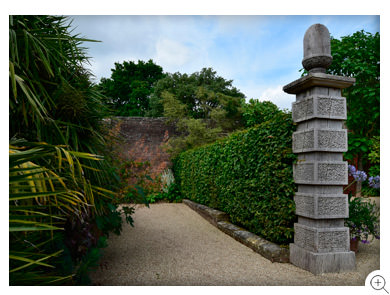Arundel’s castle looms over the town and the River Arun. Its massive bulk - a mix of round and square towers with a curtain wall - dominates the skyline. Parts of it have stood since the 11th century. Others have been added or remodelled in the 18th and 19th centuries. It is one of England’s oldest and most complete castles, and is the seat of the Dukes of Norfolk.
The military-grade severity of the building is wonderfully softened by The Collector Earl’s Garden which lies outside the castle’s curtain wall. Established by the Duchess of Norfolk and opened by Prince Charles in 2008, this part of the castle estate is a tribute to the 14th Earl of Arundel, The Collector. It is an imaginative recreation of what that Earl’s formal garden at Arundel House in London might have been like. The 14th Earl, Thomas Howard, lived between 1585 and 1646. This makes The Collector Earl’s Garden at Arundel a perfect backdrop for performances of Shakespeare’s A Midsummer Night’s Dream - written in 1595 or 1596 - and many of the bard’s other plays too. The original garden was contemporaneous with the play, and performances of the latter fit the Arundel version of the former like the proverbial glove.
Audiences seat themselves on a lawn, facing south onto a raised platform of topiary and obelisks, in the centre of which is the appropriately named ‘Oberon’s Palace’. This green oak extravaganza is a copy of the one designed by Inigo Jones for a masque held on New Year’s Day in 1611. Its shell-lined walls wrap themselves around a gilded ducal coronet that is suspended on a jet of water. Everything here is playful, as befits the king of the fairies and his fairy queen.














